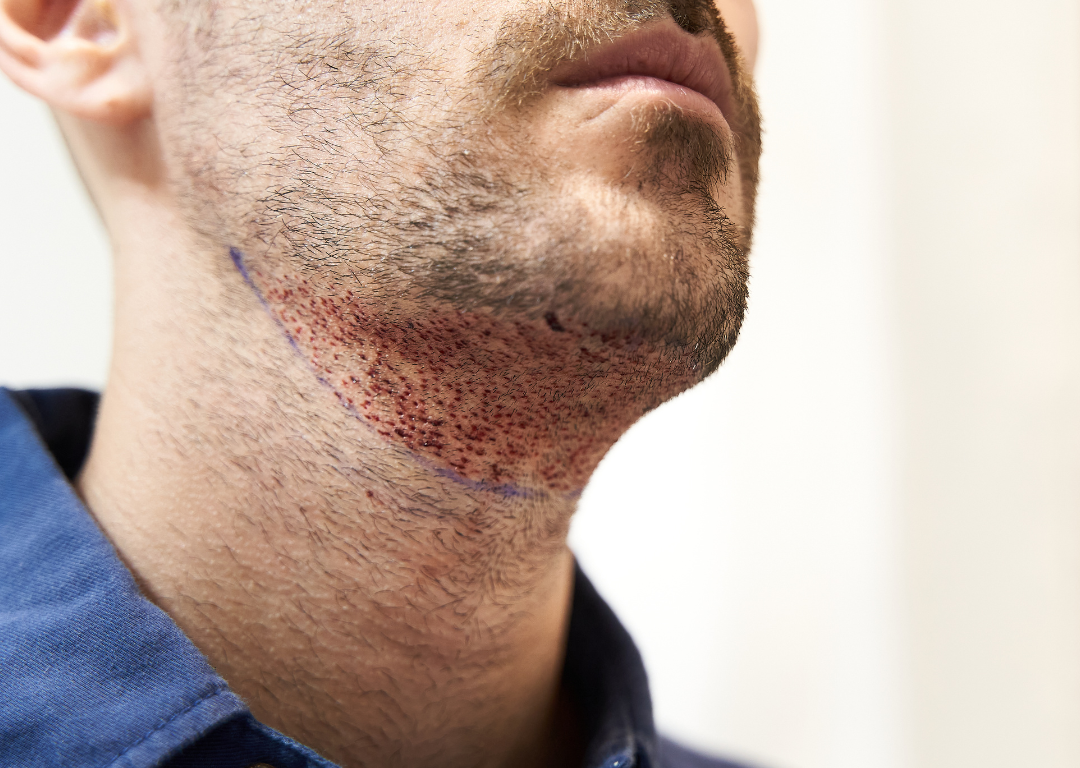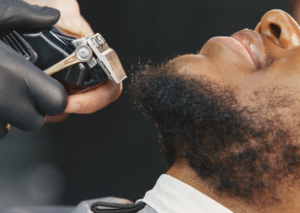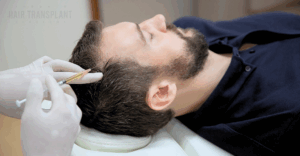Facial hair plays a significant role in shaping a man’s appearance and self-perception. For those struggling with patchy or thin beard growth, the desire for a fuller, more defined beard can be a constant source of frustration. Beard implants offer a transformative solution, allowing men to achieve the facial hair they’ve always desired. This detailed guide will take you through every step of the beard implant journey, from understanding the procedure and examining impressive beard implants before and after results to discussing costs, recovery, and potential risks. We’ll also explore alternative options and provide expert advice on selecting the right clinic. Prepare to discover how beard implants can help you achieve your aesthetic goals and boost your self-confidence.
Key Takeaways
- Beard implants provide a lasting solution for those seeking a fuller beard: This procedure addresses various concerns, from patchy growth to scarring, and offers a customized approach to achieving your desired look. Understanding the entire process is key to a positive experience.
- Selecting a qualified surgeon and reputable clinic is paramount: Prioritize experience, patient care, and natural-looking results when making your decision. Research thoroughly, ask questions, and compare clinics to find the best fit for your needs.
- Explore all available options before making a decision: Non-surgical treatments and natural growth methods offer alternative solutions for enhancing your beard. Consult a hair specialist to determine the most suitable approach for your goals.
What Are Beard Implants?
What Are Beard Implants?
Beard implants are a cosmetic procedure for men seeking a fuller, thicker beard. They involve transplanting hair follicles from one area of your body, typically the back or sides of your head, to your beard area. This procedure is very similar to a traditional hair transplant, just in a different location. It’s a solution for those with patchy beards, thin beard growth, or scarring that prevents natural hair growth. If you’re looking to enhance your facial hair, beard implants offer a permanent solution for achieving your desired look. For those considering hair restoration options in general, you can explore our hair loss solutions page.
How Do Beard Implants Work?
The beard implant procedure typically takes between five and eight hours. A surgeon carefully extracts individual hair follicles from the donor area (usually the sides or back of your head) and then implants them into the recipient areas of your beard. The transplanted follicles will eventually grow new hair, filling in the patchy areas and creating a fuller appearance. While the procedure itself is relatively straightforward, the complete healing and beard growth process takes time, usually around a year. It’s normal to experience some redness and swelling in the first week to 10 days following the procedure. If you’re curious about the cost, our hair transplant pricing page offers detailed information.
FUE vs. FUT: Comparing Techniques
Two common techniques used for beard implants are Follicular Unit Excision (FUE) and Follicular Unit Transplant (FUT or Strip). Both methods involve transplanting individual hair follicles, but they differ in how the follicles are extracted. FUE is often the preferred method, and we also sometimes see partial no-shave FUE (where only the donor area is shaved). The FUE technique requires the surgeon to create small incisions before placing the grafts. Then, the actual implanting is done with precision, allowing the surgeons to implant the grafts at precise angles, resulting in a more natural-looking beard. You can learn more about our surgeons’ expertise in both FUE and FUT by visiting our About Us page. To discuss which technique might be best for you, request a consultation with one of our experienced surgeons.
Your Beard Implant Journey: Consultation to Results
Deciding to get a beard implant is a big decision. Knowing what to expect throughout the entire process, from the initial consultation to seeing your final results, can make the experience much smoother. Let’s break down each stage of a typical beard implant journey.
Initial Consultation and Planning
Your journey begins with a consultation with a qualified hair restoration surgeon. This meeting is crucial for setting expectations and creating a personalized plan. The surgeon will assess your facial hair growth, discuss your goals, and determine the number of grafts needed. They’ll explain the procedure in detail, addressing any questions or concerns you may have. Choosing the right clinic and surgeon is paramount, so take your time and find a reputable practice like Toronto Hair Transplant Surgeons that prioritizes experience and patient care. This initial consultation is also a good time to discuss pricing and financing options.
The Procedure Day
On the day of your procedure, the surgical team will prepare the donor area, typically the back or sides of your scalp, and the recipient area on your face. Local anesthesia will numb the areas, ensuring your comfort throughout the process. Whether the surgeon uses the FUE (Follicular Unit Excision) or FUT (Follicular Unit Transplant) extraction method, they will meticulously transplant each hair follicle to the recipient area, following your personalized plan to achieve the desired beard shape and density. Toronto Hair Transplant Surgeons uses advanced techniques to ensure natural-looking results.
Post-Implant Care and Recovery
After the procedure, you’ll receive detailed post-operative care instructions. It’s normal to experience some swelling and redness in the treated areas for a few days. Your surgeon may prescribe medication to manage any discomfort and prevent infection. Following these instructions carefully is essential for proper healing and optimal results. Recovery timelines vary, but you can generally expect to return to your normal routine within a few days. Be sure there is a plan for follow-up with your surgeon or contact points and appointments to ensure the monitoring of your healing progress.
Your Results Timeline
Patience is key when it comes to seeing the final results of your beard implant. While some initial hair growth may appear within a few months, it can take up to a year for the transplanted hair to fully mature and reach its final density. Around three to four months post-procedure, you’ll likely start to see noticeable new growth. Once the hair has fully grown in, you can treat it like your natural beard, shaving, trimming, and styling as you wish. The results of a beard implant are generally considered permanent, giving you long-lasting confidence in your new look.
Beard Implants: Before & After Expectations
Deciding to get a beard implant is a big step. Understanding the process and having realistic expectations is key to a positive experience. This section covers what influences your results, what’s achievable, and common misconceptions about the procedure.
Factors Influencing Your Final Appearance
Several factors play a role in how your beard implant will ultimately look. The number of grafts needed depends on the extent of your hair loss, the availability of donor hair, and your desired beard thickness. Your hair characteristics—like color, thickness, and texture—also influence the final result. Thicker hair follicles create more volume, while finer hair may require more grafts to achieve the same fullness. Finally, your individual goals for the transplant, whether it’s a full beard or filling in patches, will guide the surgeon’s approach. A thorough consultation with an experienced surgeon is crucial to discuss these factors and develop a personalized hair restoration plan.
Realistic Outcomes and Limitations
While beard implants can significantly improve your facial hair, it’s important to have realistic expectations. Like any surgical procedure, results can vary. While an experienced surgeon strives for natural-looking results, the final outcome depends on individual factors like your body’s healing process and hair growth cycle. Full beard growth typically takes around a year, so patience is essential. It’s also important to understand that a beard transplant isn’t a magic fix for all hair loss situations. If you have significant scarring or very limited donor hair, achieving a full, thick beard might not be possible. A qualified surgeon will honestly assess your situation and discuss what you can realistically expect during your initial consultation. You can also learn more about the pricing of the procedure during your consultation.
Common Misconceptions
One common misconception is that beard implants look unnatural. This simply isn’t true with modern techniques and a skilled surgeon. When done correctly, beard implants create results that blend seamlessly with your existing facial hair. Another myth is that the procedure is incredibly painful. While some discomfort is expected, the procedure is typically well-tolerated, and your surgeon will take steps to minimize any pain. Finally, some believe a beard transplant is a quick fix. In reality, it’s a process that requires time for healing and growth. Understanding the timeline and stages of recovery will help you manage your expectations and appreciate the final results. Learn more about our team of experienced surgeons to understand the level of expertise involved in the procedure.
Choosing the Right Beard Implant Clinic
Finding the right clinic is crucial for a successful beard implant journey. A reputable clinic with experienced surgeons is essential for natural-looking results and minimizing potential complications. This section will guide you through the key factors to consider when making this important decision.
Key Factors to Consider
Prioritize clinics with board-certified surgeons specializing in hair restoration. Extensive experience, specifically in beard transplants, is a major plus. Look for surgeons with a strong understanding of facial anatomy and hair growth patterns. Review before-and-after photos to get a sense of their work and the results you can expect. Reading patient testimonials can also offer valuable insights.
Beyond the surgeon’s credentials, consider the clinic’s reputation and facilities. A clean, modern facility equipped with advanced technology demonstrates a commitment to quality care. Transparent communication is also key. A clinic that provides clear information about the procedure, costs, and expected outcomes builds trust and confidence.
Questions to Ask Your Surgeon
Don’t hesitate to ask your surgeon plenty of questions during your consultation. It’s your opportunity to gather the information you need. Inquire about their experience with beard transplants, the techniques they use (FUE vs. FUT), and the number of procedures they’ve performed. Ask to see examples of their work and discuss your specific goals. Understanding the potential risks and side effects, as well as the recovery process, is also important. A skilled surgeon will address all your concerns and provide honest answers.
Potential Risks and Side Effects of Beard Implants
Like any surgical procedure, beard implants come with potential risks and side effects. Understanding these beforehand helps you approach the procedure with realistic expectations and prepare for the recovery process. While serious complications are rare, especially when performed by a qualified and experienced surgeon, it’s essential to be aware of what could happen.
Common Short-Term Side Effects
In the days immediately following your beard transplant, some swelling and discomfort in the transplanted area are normal. This is a natural part of your body’s healing process. You might also experience some minor redness or itching. These side effects are typically temporary and subside within a week or two. Younger patients tend to heal faster than older patients due to more robust cellular regeneration. This difference in healing time can also influence the final appearance of the transplanted beard.
Long-Term Considerations
While less common than short-term side effects, some long-term considerations exist. As with any cosmetic procedure, a beard transplant has inherent potential risks. These can include infection, scarring, or ingrown hairs. Choosing a skilled and experienced surgeon significantly minimizes these risks and is a pivotal factor in the success of your procedure. At Toronto Hair Transplant Surgeons, our procedures are performed exclusively by experienced surgeons, not technicians, ensuring high-quality, natural results. Request a consultation to discuss your individual needs and concerns.
Managing Expectations and Complications
Knowing what to expect and how to manage potential complications is crucial for a smooth recovery. Temporary hair loss after the procedure is normal—the transplanted hairs often shed within a few weeks before new growth begins. It typically takes 8–12 months to see the full results of your beard transplant, so patience is key. While rare, infection is a possible complication. Familiarize yourself with the signs of infection, such as excessive bleeding, redness, swelling, pain, or fever. If you experience any of these, contact your surgeon immediately for prompt treatment. Open communication with your surgeon throughout the entire process, from consultation to post-operative care, is vital for addressing any concerns and ensuring a successful outcome. At Toronto Hair Transplant Surgeons patients recieve a full information packet with contact information and our detailed follow-up procedures.
Beard Implant Costs: A Breakdown
Let’s talk about the financial side of beard implants. Understanding the costs involved is key to making an informed decision.
Average Price Ranges
The price of a beard transplant varies, often depending on the number of grafts needed and the clinic’s location. Generally, the average cost falls between $3,000 and $10,000. More complex procedures or highly specialized surgeons can mean higher costs, sometimes reaching $15,000 to $25,000. RealSelf offers valuable insights and community-reported pricing.
Financing and Insurance Options
Many find the cost of a beard transplant a significant investment. It’s important to remember that most insurance plans don’t cover cosmetic procedures like beard transplants. Be prepared to cover the expense yourself. At Toronto Hair Transplant Surgeons, we have partnered with Beautifi to bring you industry-leading interest rates and affordable monthly payment options. Monthly payment options are available for any procedure offered.
Value vs. Cost
While cost is a major factor, consider the long-term value. A successful beard transplant can significantly improve your appearance and boost your self-confidence. Before deciding, research different clinics, read reviews, and consult with several professionals. This helps ensure you find a reputable clinic offering quality care that justifies the cost. This is an investment in yourself, so finding the right fit is essential.
Beard Implant Alternatives
If you’re exploring ways to enhance your beard but aren’t ready for surgery, several non-surgical and natural methods can help you achieve a fuller look. These alternatives offer less invasive approaches to beard enhancement and can be a good starting point before considering a surgical beard implant.
Non-Surgical Options
For those seeking a non-invasive approach, options like scalp micro-pigmentation and low-level laser therapy (LLLT) can create the appearance of a denser beard. Scalp micro-pigmentation, a technique sometimes used for hair loss solutions, involves applying pigments to the skin to mimic the look of hair follicles. This can create an illusion of fullness, similar to the effect of a hair transplant. LLLT is another non-surgical option that uses low-level lasers to stimulate hair follicle activity, potentially encouraging growth. LLLT devices like the BIOLIGHT Laser Therapy cap are available for home use, offering a convenient way to potentially boost beard density.
Natural Beard Growth Methods
Alongside professional treatments, you can also explore natural methods to promote beard growth. Minoxidil, a topical solution, is a common choice for stimulating hair follicles and encouraging growth. Additionally, maintaining a balanced diet plays a crucial role in overall hair health. Prioritizing nutrient-rich foods, especially those containing biotin, vitamin E, and omega-3 fatty acids, can contribute to healthier hair, which may lead to a fuller beard. If you’re considering these methods, request a consultation with a hair specialist to discuss the best approach for your individual needs and ensure you have realistic expectations.
Maintaining Your New Beard
You’ve invested in a beard transplant—congratulations! Now, let’s talk about how to care for your new beard to ensure it thrives. Maintaining a healthy beard involves diligent early care and a good long-term routine.
Daily Care Routine
The first few days after your beard transplant are crucial. You might experience some swelling and discomfort, which is completely normal. Think of it like tending a newly planted garden—it needs extra TLC at the beginning. Gentle washing and avoiding strenuous activities are key, as advised by our experts here at Toronto Hair Transplant Surgeons. Your clinic will provide specific guidelines, so listen carefully and follow their advice. This early care sets the foundation for a healthy, thriving beard.
 Long-Term Maintenance
Long-Term Maintenance
Once healed, you can treat your new beard like your natural facial hair. Shave, trim, and style it however you like! Our surgeons confirm that for most patients, the results are permanent, so enjoy your new look with confidence. Establishing a consistent care routine is essential for long-term success. A good regimen might include washing with a gentle beard wash, using beard oil for hydration, and regular brushing to prevent ingrown hairs. Consistency is key to maintaining a healthy, full beard you’ll be proud of.
Is a Beard Implant Right for You?
Deciding on a beard implant is a personal journey. This section helps you assess your candidacy, weigh the pros and cons, and ultimately make an informed decision.
Assessing Your Candidacy
A beard transplant can be a game-changer if you’re dealing with uneven beard growth, noticeable patches, or even a completely bare face. It offers a permanent solution, potentially boosting your self-esteem and improving your facial aesthetics. Whether you envision a subtle enhancement or a full, luxurious beard, this procedure can be tailored to your specific goals. However, it’s essential to have realistic expectations. A consultation with a qualified surgeon will help determine if a beard transplant is the right fit for your individual needs and desired outcome. They can assess your hair characteristics, discuss your expectations, and address any underlying health conditions that might affect the procedure. For those in Canada, and more specifically, the greater Toronto area, Toronto Hair Transplant Surgeons offers consultations both in person and online to discuss personalized treatment plans.
Weighing Pros and Cons
Like any cosmetic procedure, beard implants have advantages and disadvantages. A successful beard transplant can provide natural-looking results, especially when performed by an experienced surgeon. It allows you to achieve the beard style you’ve always wanted, potentially boosting your confidence and overall appearance. The procedure is also highly customizable, catering to individual preferences and facial features. However, it’s crucial to acknowledge the potential downsides. Beard transplants can be a financial investment, and the recovery period requires patience and adherence to post-operative care instructions. While rare, there are potential risks and side effects, which your surgeon will discuss with you in detail. Understanding both the benefits and drawbacks empowers you to make a well-informed choice.
Making Your Decision
Choosing the right clinic and surgeon is paramount for a successful beard transplant. Prioritize clinics with experienced, qualified surgeons specializing in hair restoration. Toronto Hair Transplant Surgeons, for example, emphasizes that surgeries are performed by experienced surgeons, not technicians, ensuring high-quality results. Thoroughly research potential clinics, comparing their expertise, technology, and patient testimonials. Ask your surgeon about their qualifications, experience, and approach to beard transplants. A thorough consultation should address all your questions and concerns, leaving you feeling confident and prepared. Ultimately, the decision is yours. By carefully considering your candidacy, weighing the pros and cons, and selecting a reputable clinic, you can increase your chances of achieving the desired results. If you’re considering a beard transplant, request a consultation to discuss your options and create a personalized plan.
Related Links
- Before and After Beard Transplant – Photos
- Beard Restoration – 933 grafts -10-months-post-op
- No-Shave FUE for Beard Transplant
- Beard Transplant – Case Study
- Non-Surgical Hair Restoration – THTS
Frequently Asked Questions
How long does a beard transplant procedure take? A typical beard transplant procedure can last anywhere from five to eight hours, depending on the complexity of the case and the number of grafts being transplanted.
What’s the difference between FUE and FUT beard implant techniques? Both FUE (Follicular Unit Excision) and FUT (Follicular Unit Transplant) involve transplanting individual hair follicles. The difference is the method of extraction, not the implanting. Both methods require the surgeon to create small incisions before implanting the grafts, with attention to the precision and control over the angle and depth of each graft. This leads to a more natural look and faster healing.
What is the typical recovery time after a beard transplant? You can usually return to your normal routine within a few days following the procedure. However, complete healing and full beard growth take time, usually around a year. You’ll likely see noticeable new growth around three to four months post-procedure, but it takes a full year for the transplanted hair to mature and reach its final density.
How much does a beard transplant cost? The cost of a beard transplant varies depending on several factors, including the number of grafts needed, the clinic’s location, and the surgeon’s expertise. On average, you can expect to pay between $3,000 and $10,000. More complex cases or procedures performed by highly specialized surgeons can cost more. Many clinics offer financing options to make the procedure more affordable.
What are the potential risks of a beard transplant? Like any surgical procedure, beard implants carry potential risks, although serious complications are rare, especially with a qualified surgeon. Short-term side effects like swelling, redness, and itching are common and typically subside within a week or two. Long-term risks, while less frequent, can include infection, scarring, or ingrown hairs. Choosing an experienced surgeon significantly minimizes these risks.





 Long-Term Maintenance
Long-Term Maintenance

